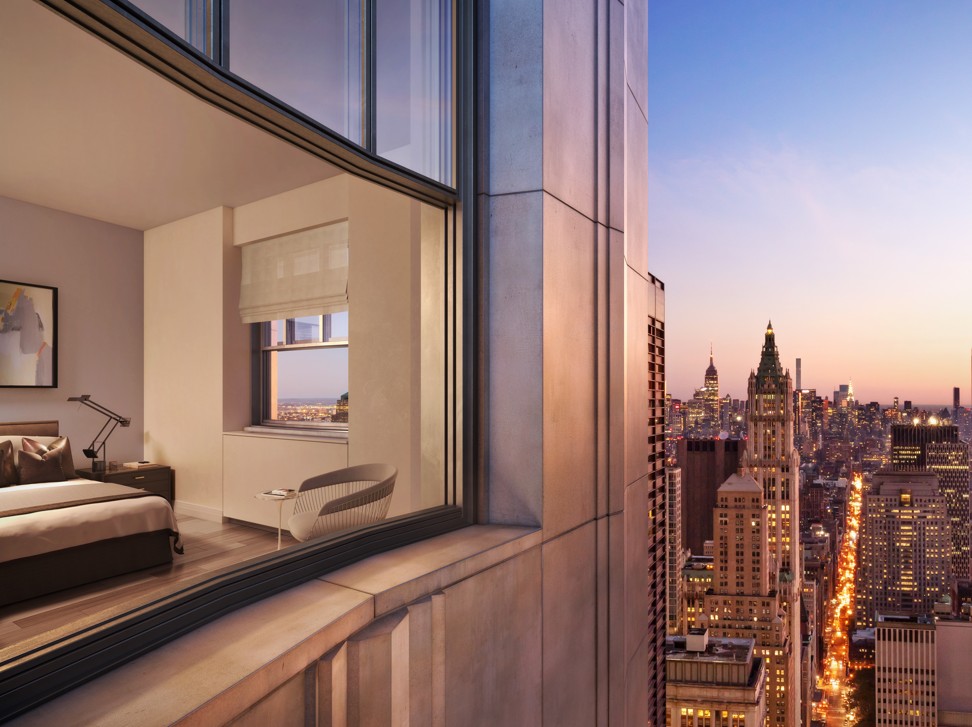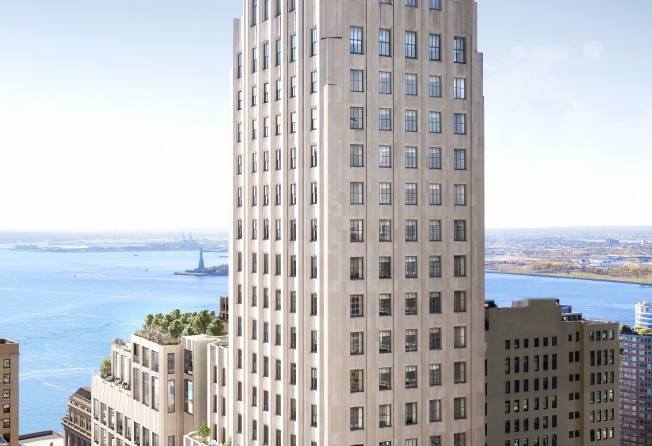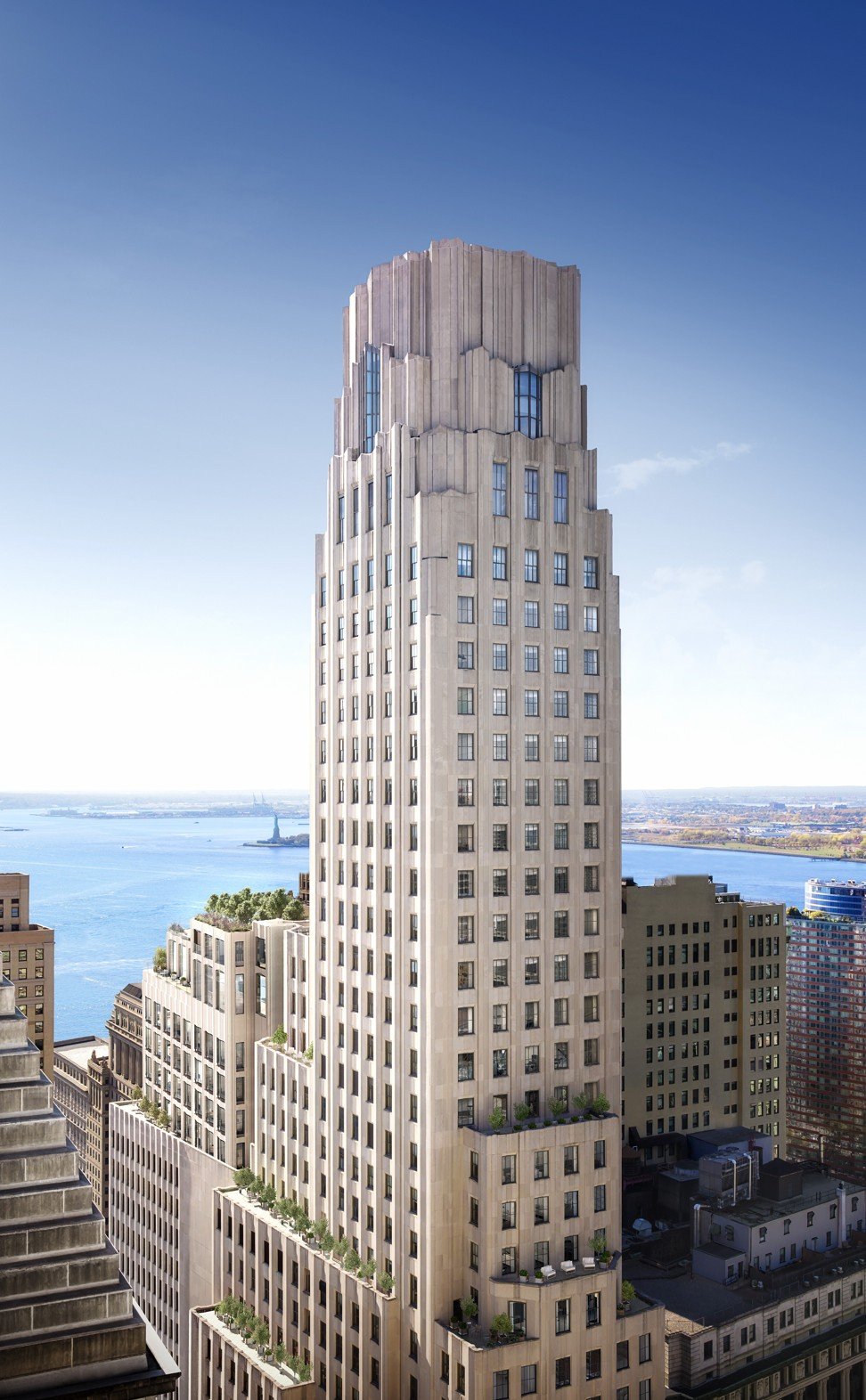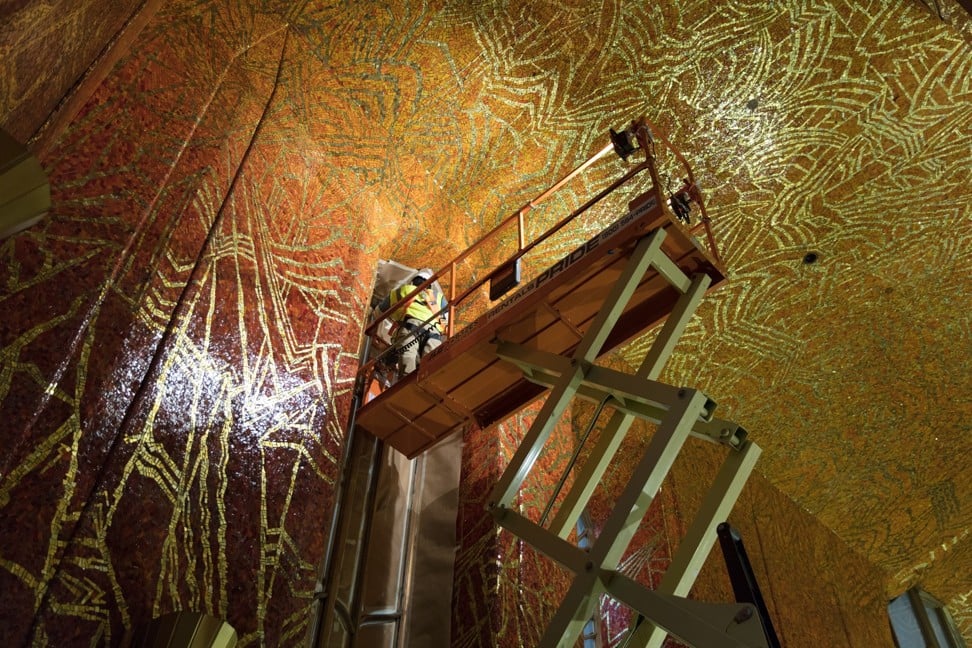
How would you like One Wall Street as a home address? New York’s art deco skyscraper gets a luxury makeover
Refurbished 56-storey, art deco 1931 building – once home to an investment bank – is tipped to open with 566 condominiums and 174,000 feet of retail space next year

In the heart of New York’s Lower Manhattan stands a skyscraper steeped in a rich history, which is regarded by many people as a city landmark.
The 56-storey art deco One Wall Street, situated east of Broadway and the New York Stock Exchange, was originally built for the American investment bank, Irving Trust Company.
Today it is the city’s largest office-to-condominium conversion, which will offer unrestricted views of the Statue of Liberty and New York Harbour.
After the completion of the rebuilding and refurbishment work – expected some time next year – the building will comprise 566 luxury condominiums with retail spaces at the base.
The retail space will take up 174,000 square feet of the building’s total area of 1,200,000 square feet.

One Wall Street was designed in 1931 by the late American architect Ralph Walker, who The New York Times named as the “Architect of the Century”.
The building contains the famed Red Room – a 5,000-square-foot, triple height area with a floor-to-ceiling mosaic created by the late American muralist Hildreth Meière.
The space, widely considered to be one of the most spectacular interiors in New York, is special for a number of reasons.
Its construction did not conform to the typical designs of public spaces in the city’s other banking buildings in the early 20th century, which favoured a neoclassical style, where internal walls were covered with white marble and classically inspired columns and mouldings.

Kathleen Skolnik, co-author of 2014 monograph, The Art Deco Murals of Hildreth Meière, says: “The Red Room, One Wall Street and the banking firm it was built for, are significant in the history of New York.
“The architect of the building, Ralph Walker, of Voorhees, Gmelin & Walker, was a pre-eminent New York designer responsible for a number of outstanding modernistic, or art deco, buildings of the era.”

The distinctive profile of One Wall Street was an elegant response to the 1916 zoning ordinance, which allowed buildings that tapered inward to exceed the existing height limitations, Skolnik says.
The art deco design features tall, pointed ground-floor windows with bronze tracery suggesting a modernised Gothic influence, which was possibly inspired by the nearby Trinity Church.
The building’s Red Room is currently undergoing a US$1 million renovation to turn it into a space primarily for retail use.
When it reopens, it will be the first time the public will have seen the room since 2001.
Thomas Mellins, an architectural historian who specialises in New York, says the Red Room is significant for having “the city’s greatest and most inventive art deco interiors”.
He says: “The architect, Ralph Walker, powerfully expressed the reality that a room within a steel-framed curtain-wall building, such as One Wall Street, in which the interior walls are not load bearing, could be treated as a completely independent entity.”
The room has mosaic-covered walls, which are modulated in colour, rising from red tiles set in blue grouting to orange tiles set in black grouting. Woven through this brilliant field of colours is a complex linear pattern rendered in shimmering gold.

Joe Boscoe, project manager of Macklowe Properties, a New York development company, is overseeing the restoration that has already taken builders and design professionals more than 3,000 working hours to transform.
He says the room’s renovation is no small feat.
“It’s important to us that we maintain the historical integrity of the room by using materials that complement and/or preserve the existing finishes, while also finding creative solutions to meet current codes,” Boscoe says.
The addition of the building’s flats and retail facilities will be the final part of the area’s transformation into a vibrant 24/7 neighbourhood, Macklowe Properties says.
“The influx of One Wall Street residents will provide a dynamic constituency of young professionals and families.”
Downtown is now one of the best-connected neighbourhoods in New York, which makes it, and One Wall Street, an extremely attractive place to live
The completed building will offer a doorman and concierge team offering round-the-clock support for its residents.
Downtown, the former financial district of New York where One Wall Street stands, has seen major changes since the 9/11 terrorist attack, with financial institutions moving out of the area and the residential population tripling in size.
However, it is still a popular base for many global companies, including Condé Nast, Time, Harper Collins and Spotify.
More than US$30 billion has been invested in the area’s real estate and infrastructure in the past decade to rejuvenate the local property market, which has attracted businesses linked to start-ups and creative industries.
At least US$6.4 billion of that investment has gone of expanding public transport so that the area now boasts 12 subway lines, 30 bus routes, 20 ferry routes and 28 bike-share stations.
“Downtown is now one of the best-connected neighbourhoods in New York, which makes it, and One Wall Street, an extremely attractive place to live,” Macklowe Properties says.